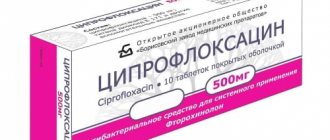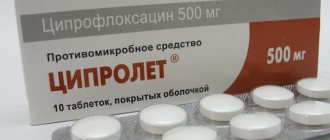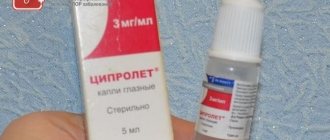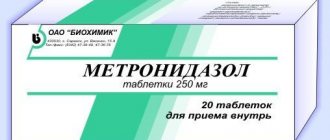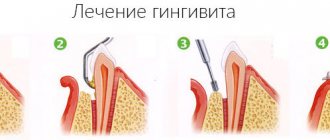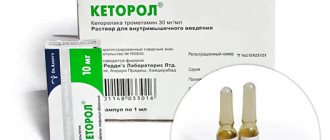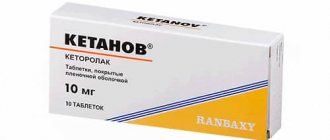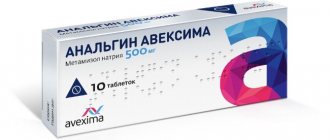1449
Author of the article
Evgeniy Nikolaevich Konoplev
Reading time: 5 minutes
AA
Pharmacists classify Tsifran as a second generation quinoline. It contains ciprofloxacin, the principle of action of which is aimed at destroying DNA gyrase of pathogens. Under their influence, synthesis is disrupted and protein creation is blocked in the cells of microorganisms. The drug is effective against gram-negative bacteria at rest and gram-positive bacteria during excretion. After therapy, the body does not develop resistance to other antibiotics, so Cifran is considered effective against viruses that are resistant to penicillin and tetracycline.
Characteristics of Tsifran
Cifran is an antibiotic of the fluoroquinol group. It is used for infectious diseases that are accompanied by a strong inflammatory process. The effectiveness of treatment is based on the fact that the drug interferes with the activity of pathogenic microorganisms and does not allow them to multiply. The main component of Cifran is active against gram-positive and gram-negative bacteria that are insensitive to the action of cephalosporins, aminoglycosides and penicillin.
Cifran is an antibiotic that is used for infectious diseases accompanied by severe inflammation.
Indications for the use of the drug are as follows:
- diseases of bones and joints: osteomyelitis, septic arthritis, sepsis;
- eye infections: corneal ulcers, blepharitis, conjunctivitis, etc.;
- gynecological pathologies: endometritis, inflammatory processes in the pelvis;
- skin diseases: infected burn wounds, ulcers, abscesses;
- ENT diseases: inflammation of the middle ear, sinusitis, sinusitis, pharyngitis, tonsillitis;
- diseases of the urinary system: pyelitis, chlamydia, gonorrhea, prostatitis, pyelonephritis, kidney stones;
- pathologies of the digestive system: shigellosis, campylobacteriosis, salmonellosis, peritonitis.
In addition, Cifran is prescribed for preventive purposes after eye surgery.
Antibiotics are contraindicated in the following cases:
- intolerance to the components of the drug;
- pregnancy;
- lactation;
- children under 18 years of age.
It is prescribed with caution to elderly people, for diseases of the kidneys, liver, mental disorders, epilepsy, atherosclerosis of blood vessels, and cerebrovascular accidents.
After a course of treatment, side effects rarely occur. These include:
- from the digestive tract: hepatitis, loss of appetite, cholestatic jaundice, bloating, nausea, epigastric pain, flatulence, diarrhea, vomiting;
- from the nervous system: dizziness, insomnia, tremors of the limbs, depression, hallucinations, migraine, fainting, increased sweating;
- from the senses: diplopia, impaired taste buds, hearing impairment;
- from the genitourinary system: interstitial nephritis, hematuria, crystalluria, glomerulonephritis, kidney anomalies, dysuria, polyuria.
Forms of release of Tsifran: eye drops, solution for infusion, tablets. Manufacturer of the drug: Ranbaxy Laboratories Ltd., India.
Analogues of Tsifran include: Zoxon, Zindolin, Tsifran ST, Tsiprolet.
Side effects and contraindications
Side effects of antibiotics are common, so you should consult your doctor before starting treatment. Only a doctor should prescribe a specific drug, as well as its dosage. Side effects can occur in several body systems:
- Gastrointestinal tract - nausea, diarrhea, vomiting.
- Nervous system - increased fatigue, anxiety, dizziness, weakness, and in rare cases, convulsions.
- The cardiovascular system. Arrhythmia, fainting, pain in the chest.
- Circulatory system. A drop in the level of red blood cells, platelets and white blood cells.
- Allergic reactions of varying severity.
- Increased sensitivity to ultraviolet radiation, therefore, when treating with the drug, you should not stay in the sun for a long time without special creams.
If any of the adverse reactions occur, you should immediately consult a doctor, he will either adjust the dose or discontinue this medication.
The product also has contraindications for use:
- pregnancy,
- age up to 8 years,
- blood diseases with inhibition of hematopoietic function,
- seizures and epilepsy,
- lactation,
- mental problems,
- atherosclerosis and other disorders of the brain,
- allergy to the components of the drug.
If there is any contraindication, the medicine is not prescribed and is replaced with another antibiotic.
Characteristics of Tsiprolet
Tsiprolet is an antibiotic belonging to the group of fluoroquinolones. Having penetrated the bacterial cell, its active substance does not allow the formation of enzymes involved in the reproduction of infectious agents. Doctors often prescribe this drug for the treatment of many diseases.
Tsiprolet is an antibiotic that doctors often prescribe for the treatment of many diseases.
Tsiprolet effectively destroys:
- E. coli;
- streptococci;
- staphylococci.
The drug is indicated in the following cases:
- bronchitis, focal pneumonia;
- urinary system infections: kidney inflammation, cystitis;
- gynecological diseases;
- abscesses, mastitis, carbuncles, phlegmons, boils, accompanied by suppuration of various parts of the body;
- prostate disease;
- infectious processes in the ear, nose and throat area;
- peritonitis, abscess;
- hydronephrosis;
- infectious diseases of bones and joints;
- eye diseases.
In addition, Tsiprolet is prescribed after surgery for pancreatitis and cholecystitis in order to prevent purulent complications.
Contraindications for the drug include:
- deficiency of glucose-6-phosphate dehydrogenase;
- pregnancy, lactation;
- pseudomembranous colitis;
- children under 18 years of age;
- liver diseases.
Tsiprolet should be used with caution in patients with mental disorders, seizures, poor cerebral circulation, atherosclerotic lesions of cerebral vessels, and diabetes mellitus.
It is extremely rare for an antibiotic to cause side effects. It could be:
- anemia;
- increased seizure activity;
- irritation of the gastrointestinal tract;
- allergic reactions in the form of angioedema, rash, anaphylactic shock;
- heart rhythm disturbance.
Tsiprolet is produced in the form of tablets, solution for infusion, and eye drops. Manufacturer of the drug: Dr. Reddys Laboratories Ltd, India.
Its analogues include:
- Ciprofloxacin.
- Cipropharm.
- Tsipromed.
- Ciproxol.
- Ciloxane.
- Phloximed.
Which is better: Azithromycin or Tsiprolet?
The main manifestations of adnexitis are an increase in temperature up to 39˚C and sharp pain in the lower abdomen, which can radiate to the sacrum or lumbar region.
Other symptoms may also occur:
- menstrual irregularities (for example, longer and more painful periods);
- painful urination;
- watery or purulent discharge;
- intermenstrual bleeding;
- painful sensations during sexual intercourse.
the danger of salpingoophoritis is the risk of complications. First of all, this may be an adhesive process in the fallopian tubes, which increases the likelihood of infertility and ectopic pregnancy. Also, the inflammatory process can spread to the peritoneum and contribute to the development of peritonitis. Consequences such as disturbances in the functioning of the endocrine system or damage to the joints are also possible.
Features of antibiotic treatment
Only a specialist should evaluate the symptoms of adnexitis and prescribe antibiotic treatment. Therefore, when the first unpleasant manifestations of the disease occur, you should immediately consult a doctor. In addition to a gynecological examination, he will prescribe a smear test for flora. In some cases, diagnostic laparoscopy is also indispensable.
After confirming the diagnosis and determining the type of treatment, the specialist selects the most optimal treatment regimen. As a rule, it is based on antibiotics. Initially, they are administered intramuscularly or intravenously, and then replaced with drugs in the form of tablets. In addition, patients are prescribed probiotics that restore intestinal microflora.
The total duration of antibiotic treatment is at least 14 days. Even if the symptoms become less noticeable before this time, it is very important to follow all the doctor’s recommendations.
After all, if the taken course of antibiotics is abruptly interrupted, this will significantly increase the risk of relapse of the disease, and will also contribute to its transition to a chronic form.
In addition, in the treatment process, a special role is given to physiotherapeutic procedures, which are prescribed after the acute symptoms of the disease disappear. They prevent the formation of adhesions and also enhance the effect of antibiotics.
How drugs are selected
Which antibiotics will be prescribed for adnexitis directly depends on the reasons for its development. It is worth noting that different groups of microorganisms can provoke the inflammatory process:
- chlamydia;
- non-spore-forming anaerobes;
- gonococci;
- ureaplasma;
- Trichomonas;
- mycoplasma;
- gram-positive bacteria.
After identifying the pathogen, individual drugs or combinations thereof are selected to which the identified microorganisms are particularly sensitive.
If there are reasons that require empirical treatment of acute adnexitis with antibiotics (for example, if there are no test results yet), then specialists prescribe broad-spectrum drugs to patients.
However, in this case, it is important that the chosen medications are not only effective, but also safe.
Often, for a patient to recover, it will be enough to undergo a course of treatment with one type of antibiotic. But there are situations when one drug is not enough or it does not bring the expected results. Then the specialist is forced to treat the patient using several drugs that can affect the vital activity of different groups of pathogens.
In addition, there are certain differences in treatment regimens for different forms of pathology.
If this is acute adnexitis, then antibiotics are administered intravenously or intramuscularly until the patient’s leukocyte concentration exceeds 10 × 109/l for at least two days and the body temperature does not exceed 37.5˚C.
Then you can switch to oral medication. While in case of chronic adnexitis (uncomplicated), antibiotics in the form of tablets are immediately prescribed.
The most effective antibiotics
There are a large number of antibiotics that quickly and effectively treat salpingoophoritis. But the greatest results come from:
- Azithromycin.
It has an active effect on foci of inflammation and has excellent bactericidal properties. It is effective in complex therapy of the female genitourinary system. This antibiotic is especially actively used in the treatment of adnexitis, cervicitis and urethritis. However, it must be taken into account that Azithromycin is not used if the disease is caused by staphylococci or streptococci. - Ceftributen or Cedex. Help fight streptococci, gonococci and enterobacteria. They have antibacterial and bactericidal effects and are available in capsule form.
- Erythromycin. The drug is administered intravenously and is used when the causative agents of adnexitis are chlamydia and mycoplasma.
- Ceftriaxone.
Widely used for infectious gynecological diseases. It is recommended to be taken in cases where vaginal pathogenic microflora joins the inflammatory process. In addition, Ceftriaxone can be combined with other groups of antibiotics. - Doxycycline. It belongs to the tetracycline series and is able to actively influence many groups of microorganisms. This antibiotic can be taken orally or given intravenously. When treating adnexitis, Doxycycline helps to achieve good results within the first days after starting use.
- Metronidazole. The drug affects foci of the inflammatory process and is most often used to treat urogenital diseases.
- Tsiprolet. Used for gynecological diseases of an infectious nature. It also showed high efficiency, as well as speed of action, for adnexitis. It effectively affects gram-negative microflora, but some gram-positive bacteria are also susceptible to it. Ciprolet can also be prescribed for chlamydia and mycobacteria.
- Polygynax.
Vaginal suppositories Polygynax give good results. This drug has virtually no contraindications, and its components do not enter the bloodstream. It has a long-lasting effect due to the slow absorption of the drug by the mucous membrane. - Terzhinan. It is a combined remedy and is used locally. Available in the form of vaginal tablets that do not disturb the natural balance of microflora. The components of Terzhinan have anti-inflammatory and bactericidal effects. This drug is recommended if inflammation is caused by anaerobic infections, trichomonas, or when the patient has a mixed pathogenic microflora.
Empirical therapy
In some cases, when adnexitis is detected in women, antibiotics are prescribed, the choice of which is based on the experience of a specialist or his observations. Empirical therapy uses broad-spectrum drugs. If they do not give positive results within three days, other drugs are prescribed.
Recommended antibiotics in this case may be:
- combination of Amoxicycline with Doxycycline or Erythromycin;
- Ceftriaxone in combination with Doxycyline, Clarithromycin or Metronidazole.
As an alternative, a specialist may prescribe the combined use of Ofloxacin with Metronidazole, a combination of Lincomycin with Gentamicin or Doxycyline. In some cases, it may also be a combination of Doxycycline and Ciprofloxacin.
Prescribing antibiotics for an identified pathogen
If a patient is diagnosed with gonococcal infection, the main drugs of choice are Ceftriaxone and Ciprofloxacin. However, there are alternative drugs - Spectinomycin and Cefotaxime. It is worth noting that tetracyclines and penicillins will be ineffective, since gonococcus is relatively resistant to them.
In a situation where adnexitis is caused by chlamydia, the main drugs will be Azithromycin and Doxycycline. Although Erythromycin and Ofloxacin can also be used.
If a patient has a mycoplasma infection, then she needs to take Doxycycline or Azithromycin. Alternative drugs that a doctor can prescribe are Gentamicn, Incomycin or Ofloxacin.
Antibiotics for adnexitis during pregnancy
If the uterine appendage is inflamed in a woman who is carrying a child, treatment should be inpatient. The main criterion for choosing antibiotics in this case is the duration of pregnancy. However, other factors are also taken into account: the general clinical picture, test results, the appearance of an ovarian cyst even before conception and the individual characteristics of the patient.
Source: https://zdorovo.live/venericheskie-bolezni/chto-luchshe-azitromitsin-ili-tsiprolet.html
Comparison of Tsifran and Tsiprolet
Although the drugs have almost the same effect, they have differences, albeit insignificant.
Similarities
These drugs are available in the same forms: tablets, injection solutions, eye drops. Cifran and Tsiprolet are drugs from the same series and they have an identical active ingredient - ciprofloxacin. They have similar indications for use and have the same effect on pathogenic microorganisms. These antibiotics are also similar in terms of effectiveness and contraindications.
Tsifran and Tsiprolet are available in the same forms: tablets, injection solutions, eye drops.
What is the difference
Tsifran and Tsiprolet differ only in the additional components in their composition. The first product in the product line has a drug that has a prolonged effect (Tsifran OD). This drug completely destroys all pathogenic bacteria in the respiratory and genitourinary systems.
Which is cheaper?
Tsifran is a cheaper drug. Its average price is 45 rubles. The cost of Tsiprolet is 100 rubles.
When is the combination of Ciprofloxacin and Azithromycin possible?
The question of whether it is possible to take Azithromycin and Tsiprolet together is asked by many patients. In fact, drugs from the fluoroquinolone group (Ciprofloxacin, Tsiprolet, Tsifran and other analogues) combine well with Azithromycin.
Such regimens are successfully used in the treatment of a number of acute infectious pathologies. This primarily includes pulmonary diseases and ENT pathologies. Prescribing the drugs Tsiprolet and Azithromycin together gives an optimal therapeutic result. They are usually well tolerated, however, there remains a risk of side effects and individual intolerance.
Sources:
Vidal : https://www.vidal.ru/drugs/azithromycin__24064 GRLS : https://grls.rosminzdrav.ru/Grls_View_v2.aspx?routingGuid=464b69bc-52b8-420f-a2fd-5160efbe8523&t=
Found a mistake? Select it and press Ctrl + Enter
Patient reviews
Marina, 35 years old, Moscow: “After the removal of a wisdom tooth, the soft tissues swelled.
This was accompanied by severe pain. The doctor prescribed Tsifran, which I took 2 times a day, 1 tablet. The swelling decreased on the third day, and completely disappeared on the seventh.” Yana, 19 years old, Vologda: “I recently got sick with a sore throat. I gargled with a soda-salt solution, which relieved swelling, but the effect was short-lived. After some time, the discomfort in the throat returned. The doctor recommended Tsiprolet. The swelling decreased the very next day, breathing became easier, and other symptoms also alleviated. After 2 days the swelling was completely gone.”
Tsiprolet: instructions for use
The drug is included in the group of fluoroquinolones. The active ingredient is ciprofloxacin. Available in tablets with a dosage of 250 and 500 mg, solution for infusion, eye drops.
Characterized by a wide range of effects. Has a bactericidal effect. The mechanism of action of the drug is based on inhibition of the DNA gyrase enzyme of bacterial agents. Against this background, DNA replication and the synthesis of cellular proteins are disrupted. The active component affects not only reproducing microbes, but also those that are at rest.
Ciprofloxacin has an adverse effect on gram-negative aerobes such as Escherichia, Salmonella, Shigella, Citrobacteria, Klebsiella, Enterobacteriaceae, Protea, and Morganella. Effectively copes with intracellular pathogens such as legionella, brucella, chlamydia, listeria.
The drug is active against gram-positive aerobes: staphylococci and streptococci.
The instructions for use indicate that the medication is prescribed for:
- respiratory tract damage;
- ENT infections;
- kidney and urinary tract diseases;
- infection of the genital organs;
- damage to the gastrointestinal tract;
- diseases of the gallbladder and biliary tract;
- pathologies of the skin, mucous membranes and soft tissue structures;
- infection of the musculoskeletal system;
- sepsis;
- peritonitis.
Used as a prophylactic agent in patients with reduced immunity.
Tsiprolet is prescribed for damage to the respiratory tract.
Reviews from doctors about Tsifran and Tsiprolet
Alexey, dentist: “I prescribe Tsiprolet to patients who have inflammatory processes in the tooth (chronic periodontitis). The medicine has few contraindications and side effects, and practically does not cause allergic reactions.”
Dmitry, infectious disease specialist: “In my practice, I often prescribe Tsiprolet for bacterial eye diseases, since this drug has a wide spectrum of bactericidal effects. It rarely causes allergic reactions."
Oksana, dermatovenerologist: “I often prescribe the antibiotic Tsifran in my practice for the treatment of venereological and dermatological diseases. It effectively destroys many microorganisms and has a minimum of contraindications.”
What are Cifran ST tablets for?
Each package of tablets contains 10 or 100 pieces with instructions for use. For what diseases is Cifran ST used:
- chronic sinusitis;
- lung abscesses;
- empyema;
- chronic osteomyelitis;
- diabetic ulcers;
- bedsores;
- periodontitis, periostitis, other dental diseases of the oral cavity;
- Ciprofloxacin can be used to treat diarrhea, amoebic or mixed dysentery.
Cifran tablets with the ST prefix have the following indications for use, indicated in the annotation:
- intra-abdominal infections;
- inflammatory gynecological diseases;
- postoperative infections, in the absence of aerobic or anaerobic bacteria;
- infection of the skin and soft tissues;
- diabetic foot ulcers;
- oral infections.
It is recommended to take Cifran with the ST prefix for people with severe renal and liver failure, as well as for elderly patients, with caution. For such patients, the dose is reduced to half, plus they are monitored by the attending physician during the entire course of treatment. It is necessary to constantly monitor the condition of the liver and kidneys, the blood picture, and the slightest deviations from the norm.
Tsifran: instructions for use
Antibacterial drug from the fluoroquinolone category. The active ingredient is ciprofloxacin. Available in tablets and solution.
Prevents the proliferation of gram-positive and gram-negative bacteria that are resistant to aminoglycosides, penicillins and cephalosporins. Quickly suppresses the development of infection and the inflammatory process.
The medicine is indicated for:
- cystic fibrosis;
- pneumonia;
- acute or chronic bronchitis;
- bronchiectasis;
- tonsillitis;
- otitis;
- sinusitis;
- pharyngitis;
- adnexitis;
- cystitis;
- pyelonephritis;
- endometritis;
- gonorrhea;
- chlamydia;
- abscess;
- cholera;
- typhoid fever;
- peritonitis;
- salmonellosis.
Cifran quickly helps with burns, septic arthritis, osteomyelitis, sepsis and infected ulcers.
Cifran is indicated for cystic fibrosis.

